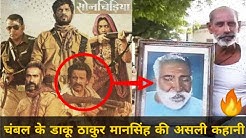
DACOITS OF CHAMBAL
The Ravines of Chambal once upon a time was famous for Notorious Dacoits. Expanding over an area of 8ooo square miles, the Chambal valley stretches across the three Indian States of Uttar Pradesh (U.P.), Madhya Pradesh (M.P.) and Rajasthan. At an 80km drive from Agra, the land is full of deep ravines and forests, which have been the home to generations of outlaws for decades. The two districts of Bhind and Morena were known for their rugged terrain and the highly inflammable nature of the people. In Chambal valley dacoity was directly linked to ravine formation as there were no employment opportunities, and not much land to cultivate. The 20 to 50 feet deep ravines provide good hideout to the dacoits. When there was oppression people could not control the anger and became rebellious.
Mansingh Rathore had a Robin Hood type Baghi image. He had turned baghi — after eliminating five Brahmins in order to avenge his brother’s insult. Most dacoits of Chambal had turned baghis after they had killed someone in a property dispute or family feud. He used to Loot rich person and give it to the poor people. Between 1939 and 1955; Singh is credited with 1,112 robberies and 185 murders. He had huge respect for woman. The police registered over a hundred cases against him, ranging from kidnapping to murder, until he and one of his son, Subedar Singh, were shot dead by Police in 1955 in Kakekapura Bhind district. His idol is worshipped at a temple in Khera Rathore. Man Singh dominated over the Chambal Valley, Terrorizing, plundering and killing for over two decades. Man Singh had the mandate of the people. He virtually decided important panchayat matters from the deep recesses of the Chambal ravines and forests. Along with his lieutenant, Roopa Singh, he used to govern their hearts and souls. After him the one man domination ended and a number of other gangs appeared.
The formation of the new state of Madhya Pradesh was marked by a series of atrocities of dacoit gangs. There were 13 gangs of dacoits on police records. Important among these gangs were of Sultan Singh, Roopa, Lakhan, Hazuri, Amrit Lal, Gabbar, Kalla and Putli. Murders, dacoity and kidnapping for ransom and disfiguration of persons started on a large scale. Tahsildar singh son of Mansingh was arrested by police during a fight and kept him in jail for life term.
Putli Bai was the first documented woman dacoit of India. She was a dancing girl who was abducted by Sultan singh Gujjar Daku and then returned. Under pressure by police to act as an informant, Putli Bai went back to the dacoit. However, she ended up falling in love with him and bearing him children. Sultan singh joined hands with Lakhan gang to expand his gang. Putli was suspicious about this friendship. There was no belief between two gangs. On may 25th 1955 there was a dialogue between Lakhan and Sultan singh gang to eliminate the difference. Police surrounded the area and liquidated Sultansingh. According to Putli, Lakhan signalled Kalla Dacoit to shot Sultan singh. Babu Lohar who became the leader of gang was fascinated with the beauty of Putli and raped her. Within 3 months she got chance to eliminate Babu Lohar in an encounter. She then became the leader of the gang herself. For three years she operated in the Chambal region along with Kalla Dacoit and was wanted on a number of charges, including kidnapping, murder and looting; she struck terror into people’s hearts when she killed 11 people, kidnapped 7 and wounded 5 in one night as she suspected the villagers in Datia had informed the police about her. She lost her one hand in a police encounter, but her moral was high, she used to shot with one hand. She wanted to surrender in 1956 but she didn’t get any positive reply from Police. On 23 rd January 1958 police party received information that Lakhan gang was planning some big thing in kothar village near Kunwari River, but to their surprise instead of Lakhan gang they surrounded Putli gang and after fierce encounter killed Putli and her gang members.
Lalsingh nicknamed the Terrible was an exarmy man who supplied arms and ammunitions to dacoits. He ran away with a rifle and killed people brutally and senselessly to create an impression and become leader of a gang. His gang swelled to sixteen members and soon become a menace in Datia region. He committed dacoity, Kidnapping, murder and nose chopping with a frequency than other Dacoits. In may 1959 he killed 5 people in sheopur subdivision. When police received his news of taking shelter in village .Dsp Madho singh surrounded the village and shot down him.
Chambal’s dreaded dacoit Amritlal was born in 1915 and in 1938 he started his criminal career. Amrit lal is popularly known as Babu Dilwala assumed his leadership of first gang in 1943.He then created series of crime in Agra,Mainpuri and Etawah districts of Uttarpradesh. During the British raj he committed a daring burglary in the house of collector of Etawah.He was arrested in year 1946 but he managed to escape from judicial lockup and in year 1949 he became leader of wild band of outlaws. In may 1953 Amritlal launched a sensational attack on Kolaras police station in Shivpuri with the intention of killing SP Chunilal,who had taken special interest for his arrest, including a little judicious harassment of his mother, whom Amritlal loved deeply. But SP was fortunate as he left the police station before attack. His strategy was one of extreme cunning and was planned with deliberation and foresight. The dacoit amassed huge amount by adopting this tactic. His decline was observed in June 1958.He had few encounters with police but he managed to escape, he suspected on few of his gang members involvement with police. He killed Daulat singh and Tula gadaria member of his gang and his gang divided in to 3 groups. He had a reward of rs 20000 on his name. His weakness for women leads to his death. On 19th August 1959 when he was misbehaving with other woman dacoit, he was killed by his own gang member.
Barelal was another dacoit who killed eleven people in Khiera village along with his gang members Sripala and Lachhi. They brutally lined boys and shot in front of their parents .On 19 th September 1959 Barelal and on 25 th September 1959 Sripala and his gang members were killed in police encounter in Maharajpur near Gwalior.
Gabbar’s name beacame synonymous with terror in the 50’s.People began to be scared by his name. He was born in 1926 in Dang village located in Gohad Tehsil of Bhind district in Madhya Pradesh. In 1955, Gabbar Singh left the village and joined Kalyan Singh Gujjar’s gang and subsequently formed his own. Gabbar had instilled so much fear in the areas of Dholpur Bhind, Gwalior and Etawah that no one dared to leak any information regarding him. Interestingly, this ‘real’ Gabbar was more of dreadful than the ‘reel’ one. Gabbar was engaged in nose-cutting and terrorizing people. In this particular era, the Madhya Pradesh’s Chambal Valley was so tensed that even the then prime Minister Jawaharlal Nehru found it hard to control the situation. In 1959, the task of eliminating Gabbar was was given to MP Police officer Rajendra Prasad Modi. During a fierce encounter between the police force and the Gabbar’s gang, he was severely injured with grenades hurled by the police. Finally he and his gang members were killed in police encounter on 13th November 1959.
Roopa was the most notorious Dacoit of Chambal Ravines. He was a Bhramin and from early age he was part of ManSingh gang. After death of Mansingh he became the commander of gang. During his period he made his gang more dangerous than ever. He was busy in murdering and plundering people. His outstanding quality was his cool and calculated courage. During five years of his Dacoit career, Roopa and his gang were credited with more than 200 murders. The gang had most sophisticated weapons. He had a telescopic rifle and was a sharp shooter. It was his overconfidence that cost his life. On 27th November 1959 his gang came upon mound in the ravines The small ambush party under head constable opened fire on his gang. He had a chance to escape but he fought with police officials and shot dead.
There is always a big thing between the rebels and police bullets in Chambal and that is the fate of the rebel. Thousands of encounters took place between the police and the rebels in the rocks of Chambal, but many times the fate of the rebels saved them from the death. A rebellious person who has saved luck and his sixth senses saved more than two decades from the police.A rebel whose name is written in the books of Chambal as the Lakhan the Terrible. He formed a new gang of Thakurs and Rajputs after Mansingh death. Lakhan was extorting money from scores of villages in the form of ‘chanda’ or subscription which amounted to several lakhs of rupees. On December 30, 1960, police and Lakhan Gang encountered in Deora village of Bhind district and Lakhan Singh was shot dead.
Pancham singh was just 14 and was peacefully living with his newly-wed wife and parents in his village in Madhya Pradesh. During Panchayat elections in the village, he was beaten up mercilessly as the other group suspected him of being part of one group. His parents pleaded with them to allow him to be taken to the hospital. No police complaint was allowed. He came home after 20 days and was again beaten up by this other group. One day he just lost his cool, took 12 friends and went to Chambal to become a dacoit. Initially he joined Man Singh gang. When he came back to his home, he killed six people on day one. Revenge had blinded him.”
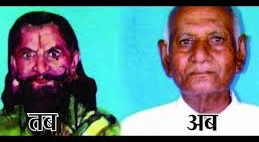
After taking revenge from the Zamindar’s men, Pancham went on to build his own gang of 550 dacoits. Over the next decade, Pancham and his men took over a hundred lives, and government had announced Rupees 2 crores as bounty against the dreaded dacoit. There was no turning back for Pancham and his men, until Jayaprakash Narayan came to Chambal and persuaded them to give up arms. He surrendered in 1972. The court had sentenced him to death, but the punishment was later changed into life imprisonment. After 8 years, the remaining sentence of Pancham was waived due to good movements. He came out of jail as a reformed person. Since then, he has been spending time with students and jail inmates, spreading the message of peace and non-violence, asking them to learn from his mistakes.
Mohar Singh, who started the crime in 1960, made such a terror that the police had started taking a scuffle till entering the Chambal. In the encounter, Mohar Singh’s gang used to easily escape by dodging police. Mohar Singh’s network was so large that he would change his strategy when he receives information about police in Chambal.
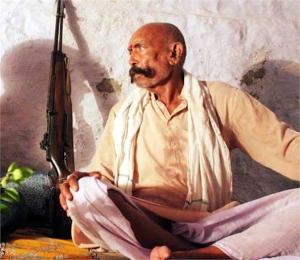
Dispute of land in his village Jatpura made his entry to Ravines of Chambal.The first offense was registered in the police record in 1958.He had an annual record of two lakh rupees on his head and 12 Lakh rupees on his gang. In police records, Mohar Singh and his gang have more than 80 murders and more than 350 robberies. His gang had shown the courage to reach the culmination of the kidnapping of the entire Indian police and the government machinery from Chambal to Delhi by giving an open challenge to this incident. Along with his gang member Nathu Singh they kidnapped a smuggler from Delhi and let him out only after recovering 26 Lakhs ransom. He was very dreadful to deal with the informers and was against the involvement of any female bandit in the gang. In his bandit life of 14 years, he faced police almost 76 times but he escaped every time. Mohar Singh’s crime was a long journey, but suddenly the dreaded robber decided to keep guns. In 1972 he surrendered along with 500 other rebels dacoits in Joras’Gandhi maidan (Ashram). Mohar Singh was sent to jail. He was sentenced to 20 years, but ‘Gentlemen’ Dacoit was released in 1980 along with the sentence of forgiveness.After leaving the jail, Mohar Singh started cultivating 35 acres of land after his dedication. In 1994, he joined the Congress and was elected as District President of Mehgaon of Bhind district. After spending a long time in politics, Mohar Singh, on the basis of his experiences, described politics as a hazardous hooligan jungle.
Madho Singh, one of the big names among dacoits of the Chambal between 1960 and 1972, eluded the police throughout his notorious career till his surrender with 500 other dacoits to Jayaprakash Narayan. His friendship with Dacoit Mohar singh was well known in valley. He was involved in 23 murders and nearly 500 kidnapping cases, and carried an award of Rs 150,000 on his head. Before taking to the ravines he worked in the Army as a male nurse in the 18th Rajputana Rifles for a year. After that he quit and started practising homeopathy in his village. The fame in village started rivalry and that made him entry to ravines of Chambal. He joined Jangjeeta Singh gang. The commanding nature from Army time very soon made him to form a separate gang and leader of it. He mostly operated in the areas of Sawai Madhopur, Ajmer, Karoli and Jalon. After his surrender he was one of the best magicians of the country
Paan Singh Tomar was an armyman and an international award-winning athlete who became a dacoit (locals prefer the term ‘baagi’ or rebel) after alleged oppression and violence against his family. The movie on him was made by director Tigmanshu Dhulia with Irrfan in the lead role. After retiring, he returned to his village Bhidosa. There arose a land dispute between him and Babu Singh. Babu Singh was the head of a 200 member family, and, had seven licensed guns. To solve the dispute, a Panchayat was held with the collector where Tomar was asked to give 3,000 to Babu Singh for his own land; Tomar obliged. However, his nephew Balwanta, retaliated as he was paying money for his own land.The collector promised to return in 15 days. In the meantime, Babu Singh came to Tomar’s house and beat up his 95-year-old mother. She asked Tomar to take revenge by morning if he was truly her son. Balwanta and Tomar went to the fields where they found Babu. Tomar shot Babu, who continued to run for about a kilometer before he fell down. He later gave an interview to a local newspaper in Gwalior which may have prompted the administration to start taking his case seriously, considering this an act of defiance. At that time, there was a price of 10,000 on his head. As per an interview he gave, he did not want to kill the eight villagers whose family tip-off led to the killing of his elder brother Matadin, but he could not stop his nephew Balwanta, who was Matadin’s son. During the entire interview, he toyed with a bullet. On October 1, 1981 the Circle Inspector Mahendra Pratap Singh Chauhan and his special team of 500 men trapped and killed Pansingh Tomar and 14 members of his gang. The gunfight lasted over 12 hours. Chauhan had been tipped off about Tomar’s arrival by Motiram Jatav one of the village Jatav at that time.
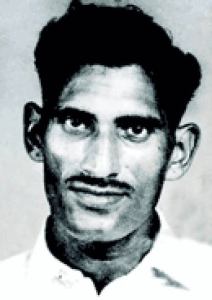
According to newspaper reports, Tomar was shot when he was alive and was asking for water: “Any Rajput here who could please give me some water?”; Hawaldar Tribhuwan Singh started walking towards Tomar with some water but the Circle inspector shouted at him: “Tribhuwan, dacoits have no caste.” And he was left to die.
Daku Malkhan Singh known as Chambal ka Sher, he accused the Sarpanch of his village that he grabbed the land of the temple. When Malkhan opposed it, the Sarpanch arrested him and killed one of his friends. This thing was not digested by him and he left his family and took rifle in his hands.
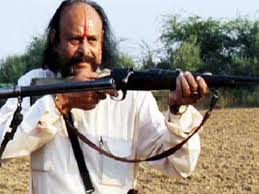
It began in 1964 when 17-year-old Malkhan was picked up under the Arms Act. Eighteen years later, the dacoit and his gang were the most feared in the region and had amassed a total of 94 police cases, including 18 cases of dacoity, 28 of kidnapping, 19 of attempt to murder and 17 cases of murder. The numbers of kidnappings carried out are believed to be much higher as, after a victim’s release on payment of the ransom, police assistance is rarely sought. When the surrender was ultimately negotiated, Malkhan himself carried a price of Rs 70,000 on his head. On June 17th 1982 he surrendered to Madhya pradesh Chief Minister Arjun Singh along with his gang.
Phoolan Devi popularly known as “Bandit Queen”, was an Indian bandit and later a member of Parliament. She was born in a poor family in rural village Gurha ka Parwa in Uttarpradesh. Phoolan endured poverty as a child and had an unsuccessful marriage before taking to a life of crime. Having developed major differences with her parents and her husband alike, the teenage Phoolan sought escape by running away and joining a gang of bandits. She was the only woman in that gang, and her relationship with one gang member, coupled with other minor factors, caused a gunfight between gang members. Phoolan’s lover was killed in that gunfight. The victorious rival factions, who were Rajput took Phoolan to their village of Behmai, confined her in a room, and took turns to rape her repeatedly over several days. After escaping (or being let off), Phoolan rejoined the remnants of her dead lover’s faction, took another lover from among those men, and continued with banditry. A few months later, her new gang descended upon the village of Behmai to exact revenge for what she had suffered. As many as twenty-two Rajput men belonging to that village were lined up in a row and shot dead by Phoolan’s gang.
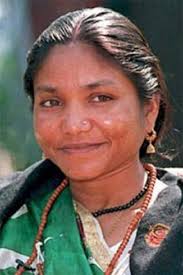
Phoolan evaded capture for two years after the Behmai massacre before she and her few surviving gang-members surrendered to the police in 1983. She was charged with 48 crimes, including multiple murders, plunder, arson and kidnapping for ransom. Phoolan spent the next eleven years in jail, as the various charges against her were tried in court. In 1994, the state government headed by Mulayam Singh yadav of Samjwadi party summarily withdrew all charges against her, and Phoolan was released. She then stood for election to parliament as a candidate of the Samajwadi party and was twice elected to the Loksabha as the member for Mirzapur Loksabha constituency. In 2001, she was shot dead at the gates of her official bungalow (allotted to her as Member of Parliament in Newdelhi by former rival bandits whose kinsmen had been slaughtered at Behmai by her gang. The 1994 film Bandit Queen was made around the time of her release from jail) is loosely based on her life until that point.
Another Dacoit Ramesh Singh Sikarwar was less famous than Malkhan or Phoolan,but his list of atrocities is too long. In less than five years, the gang ran up 91 crimes: 29 cases of murder, two of dacoity with murder, 29 kidnappings, 6 dacoities, and 25 other crimes. He came into focus in 1982; in February that year he is alleged to have killed six Harijans in a dispute over their entry into a temple in Shivpuri district. And in May, 13 cowherds met their death because Sikarwar suspected them of being police informers. The latter deed did not get much publicity because the bodies were recovered over an extended period. But when, in early 1983, his gang kidnapped 17 persons from a bus going from Sheopur in Morena district to Shivpuri (India Today March 31), there was a hue and cry in the state Assembly. Seven hostages were then released (although one was killed) in a police encounter on March 6. But for the rest, it was a long wait for freedom – at a price. For a feared gang, Sikarwar and his men were poorly equipped indeed. When they surrendered in 1984, all they had on them were three 303 rifles (one of them out of order), four 12-bore guns, and two muzzle-loaders.
Dasu Sundari Seema Parihar was born in Auraiya in Uttarpradesh. in a poor Thakur family. She was kidnapped in 1983, at the age of 13 from her village of Bawine in Uttarpradesh by dacoits Lala Ram and Kusuma Nian, and became a dacoit herself. In 1986, she married dacoit Nirbhay singh Gujjar,but later returned to Lala Ram.Parihar became the leader of her gang, and engaged in looting, kidnapping and murder in the regions surrounding Bhind jungle and Chambal river. During her career, she killed 70 people, kidnapped 200 people and looted 30 houses. In June 2000, after 18 years of dacoity, she surrendered to Uttar Pradesh police. She was jailed, facing 29 charges, including 8 counts of murder and half a dozen of kidnapping. In August 2001, she said that she had received offers from political parties.
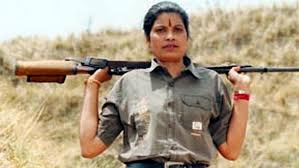
In January 2008, she moved to the Lok janshakti party and in October that year, switched to the Samajwadi party. As of October 2008, she had been acquitted of 15 of the criminal cases against her, and was on bail for the remaining 14 cases. In 2011; Parihar was appointed the head of the women’s wing of the National Corruption Eradication Council, an anti-corruption organisation.
Ramasare Tiwari alias (Fakkad) and Kusuma Nain, who were synonymous with terror in Chambal’s ravages for twenty years, but in 2004 along with his gang surrended to Rawatpuradham in Madhya Pradesh. The special sessions court has sentenced Ramasre and Kusuma Nain and a member of the gang to life imprisonment in the case of abduction. Ramasre alias Fakkad formed the gang in 1982. For nearly 22 years he ran parallel government in rugged Police of three states in Uttar Pradesh, Madhya Pradesh and Rajasthan are engaged in the siege to destroy the gang but the police could not touch its shadow. Ramasre alias Fakkad decided to put the weapon in the last stop of age. Since Madhya Pradesh had fewer lawsuits against him, he had a secret agreement with the top brass of Madhya Pradesh Police to take credit for his arrest. After receiving the assurance of completing all the autonomy of family members, arms and in-laws from the common prisoners and keeping them in the open jail, Ramasre alias Fakkad, Six members of the gang, including Kusuma Nain, surrendered before the officers of Madhya Pradesh Police in Rawatpura Dham. But there were 103 cases of kidnapping, murder, police encounter, gangster registration in the register of his crimes. 90 cases are registered against Kusuma Nain. Most of the cases were lodged in Jalna, Etawah, Aaraia, Kanpur, Deh and Agra districts and Ramasre and Kusuma Nain were transferred from Gwalior to Uri prison. Along with this, all the facilities were disconnected which Madhya Pradesh officials had asked to give in the condition of surrender.
TO BE CONTINUEDThe ravines of Chambal AKA Beehad have a special place in Northern-Central India's folklore. The stories of dacoits like Phoolan Devi, Paan Singh Tomar, Man Singh and Nirbhay Singh Gujjar are still household tales in these areas and are often narrated by grannies.
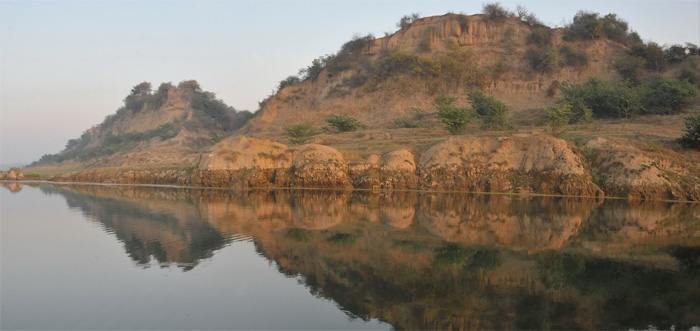
Paul Compton/flickr
"Beehad me baaghi hote hain, daku milte hain parliament mein"
This dialogue by Irfan Khan in the movie Paan Singh Tomar did create a ruckus in the power corridors. But it's also a fact that a few of the famous dacoits of Chambal have entered the parliament after forsaking their profession.
The ravines of Chambal cover the areas of three states - Uttar Pradesh, Rajasthan and Madhya Pradesh. But Madhya Pradesh's Morena and Uttar Pradesh's Bundalkhand have produced dacoits who would give Gabbar Singh, the famous dacoit in Sholay, a run for his money. Take a look
1. Phoolan Devi
Some call her a dacoit. But for many she became the symbol of rebellion against the tyranny of the upper castes and elite against those who belong to lower castes.
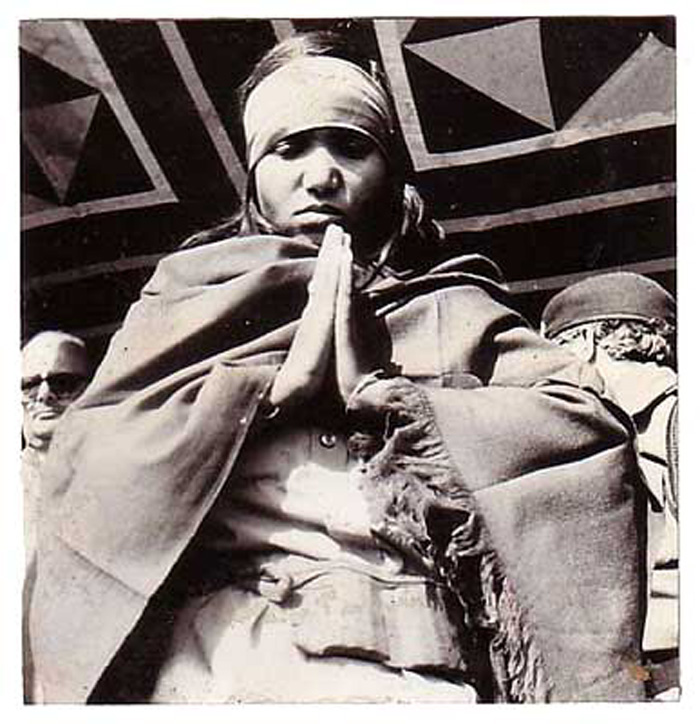
Wordpress
Better known as Bandit Queen, Phoolan rose to fame after she allegedly massacred 22 Rajputs in Behmai village in February 1981. She carried out the massacre seven months after the upper caste Rajputs of Behmai village allegedly raped her for three long weeks before she escaped with the help of Man Singh Mallah, who later became her trusted lieutenant. In 1983, after a long negotiation with the Indira Gandhi government, she surrendered along with other members of her gang.
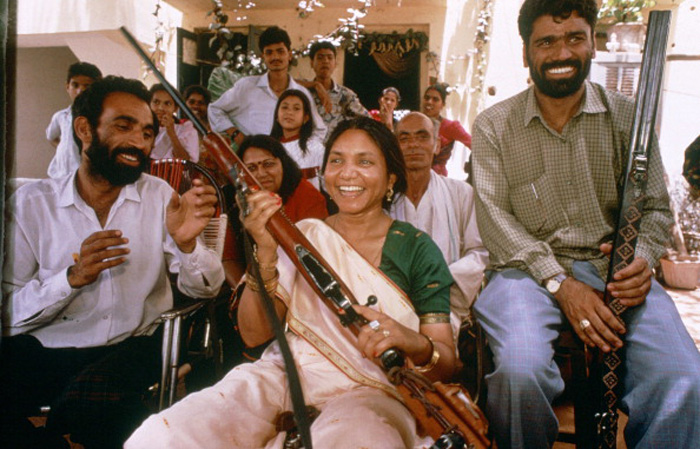
gettyimages
In 1996, two years after she was released from prison, she contested the Lok Sabha elections on a Samajwadi Party ticket from Mirzapur seat and won. In 1998 she lost the election but was re-elected in 1999. She remained an MP till 2001 when she was assassinated outside her bungalow in Delhi.
2. Daku Man Singh
Daku Man Singh is perhaps the most feared dacoit in the history of Chambal. Born in a Rajput family in Khera Rathore village in Chambal, Man Singh was a local Robin Hood. Folk songs were made after him by locals who used to get freebies of loot. "Rasta Chalta Koi Nahin Loota, Na Bahino Se Chheene Haar" "Jo Bhi Mila So Baant Diya, Bahino Ko Pahinaye Bhaat," says one of the songs made after him. Until his death in 1955, he is believed to have committed 1,112 robberies and 185 murders, including the killing of 32 police officers. He was shot dead in 1955 while sitting under a banyan tree.
S.N. Subba Rao mentions having heard Singh speak on stage in 1953 at a public function in Chambal. He recalls, “I was surprised to hear him speak. He was totally unlike what I had read about him in the papers. Though at the peak of his popularity or notoriety, he was respectful and humble. I was impressed with the contradiction he presented. The government wanted him dead with a big inam (reward) on his head and here he was, standing before the adoring public."
Bollywood legend Amitabh Bachchan has also been in awe of Man Singh's debonair. Bachchan says, "In my younger days, we were in awe of Daku Man Singh, whose escapades and adventures were common conversation in and around every possible gathering"
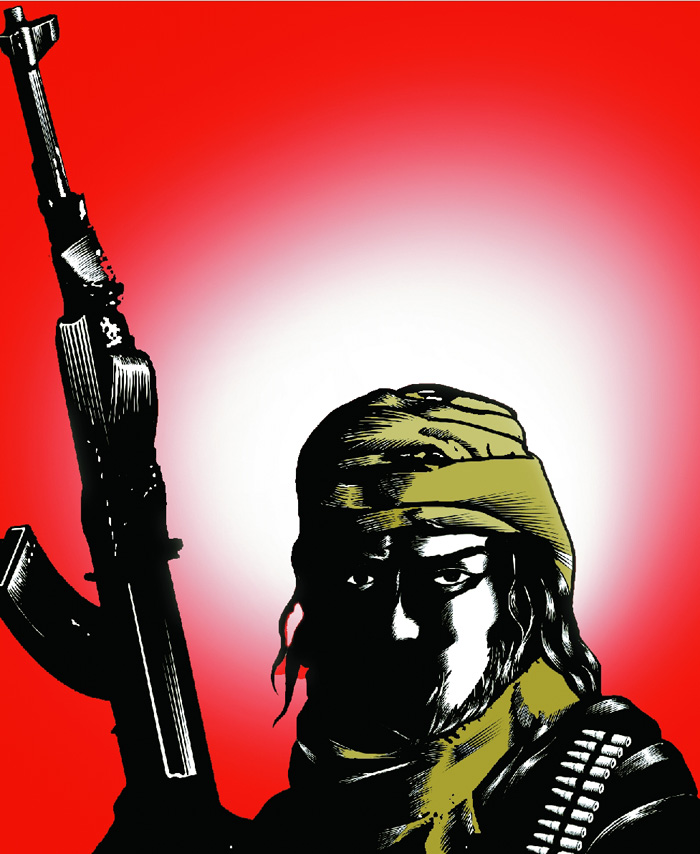
Neelabh/bccl use as Representative image
Bollywood made a movie after him Daku Man Singh in 1971 starring Dara Singh.
Man Singh has a temple after him in his ancestral village in Khera Rathore.
3. Nirbhay Singh Gujjar
Nirbhay Singh Gurjar AKA Baagi was one of the last dacoits of the Chambal. With as many as 205 criminal cases registered against him, he was certainly among the dacoits who were most feared. If conjecture is to be believed he used to run a parallel government in 40 villages of the Chakranagar area in UP.
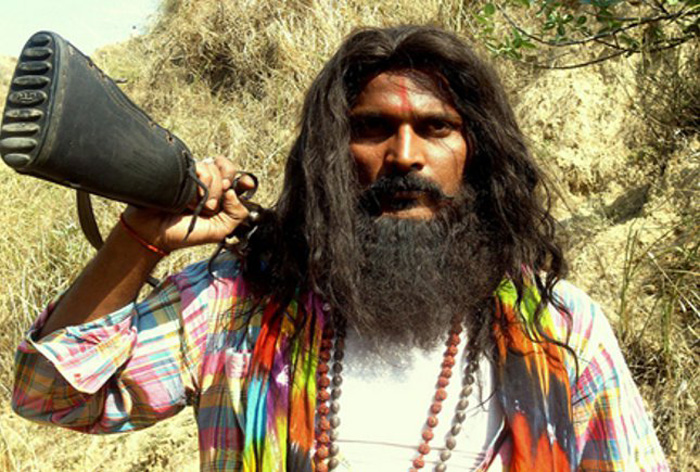
AFP
Gujjjar carried a bounty of 2.5 lakhs provided by UP and MP police and was believed to be a really bad guy with a fascination for women, wine and weapons.

topyaps
He reportedly had AK-47 assault rifles, shotguns, bulletproof jackets, night-vision binoculars and mobile phones at his disposal. He was killed in an encounter in November 2005.
4. Paan Singh Tomar
He isn't among the most fierce dacoits of Chambal, but his story from being a soldier and champion athlete to being a Daku is an interesting one. In fact, 2012 Bollywood movie Paan Singh Tomar more or less shows what he went through and how the tyranny of Babu Singh, a local village goon of his village Bhidosa in MP, affected him. After retiring from the military in 1972, he decided to live in a village. But soon things worsened when he had a land dispute with Babu Singh who headed a family of 200 and also had seven licensed guns.
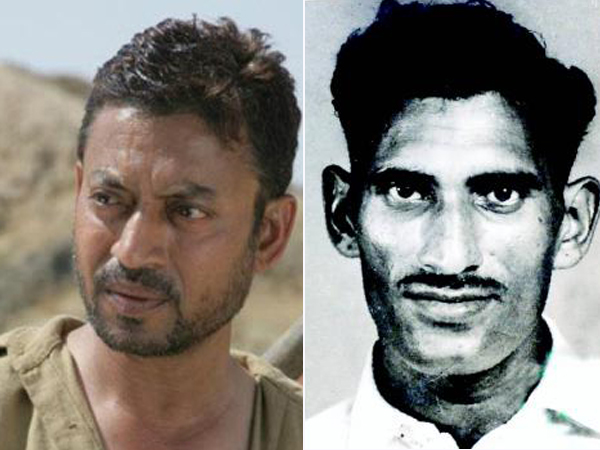
bollywood
A panchayat was held to solve the dispute and Tomar was asked to give Rs 3000 for his land to Babu Singh. Tomar obliged but his nephew retaliated as he was paying money for his own land. While the collector, who was witness to the accord signed in the Panchayat, went out of the district for 15 days, Babu Singh barged into Tomar's house and beat his 95-year-old mother. On Tomar's return, she asked him to avenge this insult. Tomar along with his nephew rushed for Babu and shot him dead. Ever since, he became a daku and wandered in Beehad of Chambal. Later, on October 1, 1981, the Circle Inspector Mahendra Pratap Singh Chauhan and his team of sixty trapped and killed Tomar. Ten other members of his gang were also killed. The gunfight lasted over 12 hours.
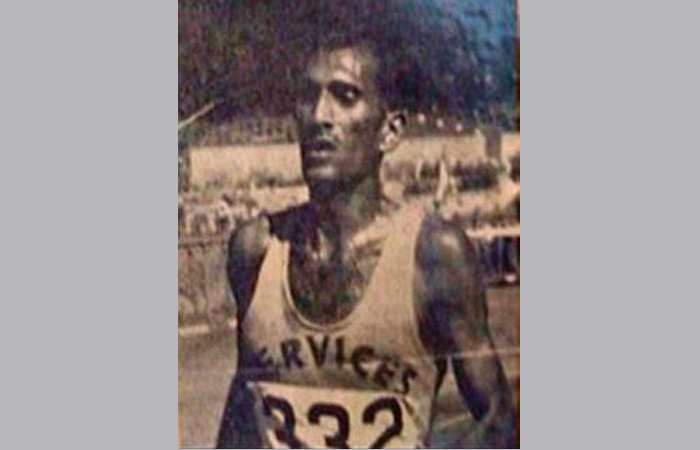
wordpress
5. Jagjivan Parihar
Jagjivan Parihar was killed in an encounter in 2007 in Morena district in Chambal area. He was a dreaded dacoit with a bounty of Rs 7.25 lakh on his head. Parihar became notorious in the late 1990s and early 2000s and became a headache for police and state government. Like Nirbhay Gujjar, he also used modern weapons to counter police and others who stood against him. Several cases of murder, loot and burglary were registered against him. He was so smart that he used to make his men dress in sarees to deceive police while he himself used to flee from the place. In the 2007 encounter, police had recovered an AK-47 rifle, a semi-automatic, a 303 and three Manchester (M-1) automatic rifles from the house he and other members of his gangs were hiding in.












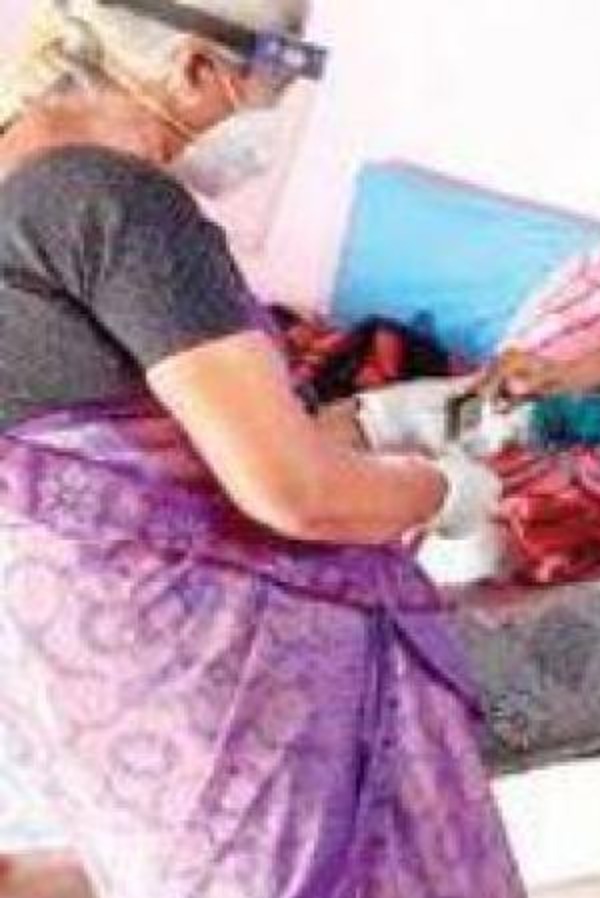



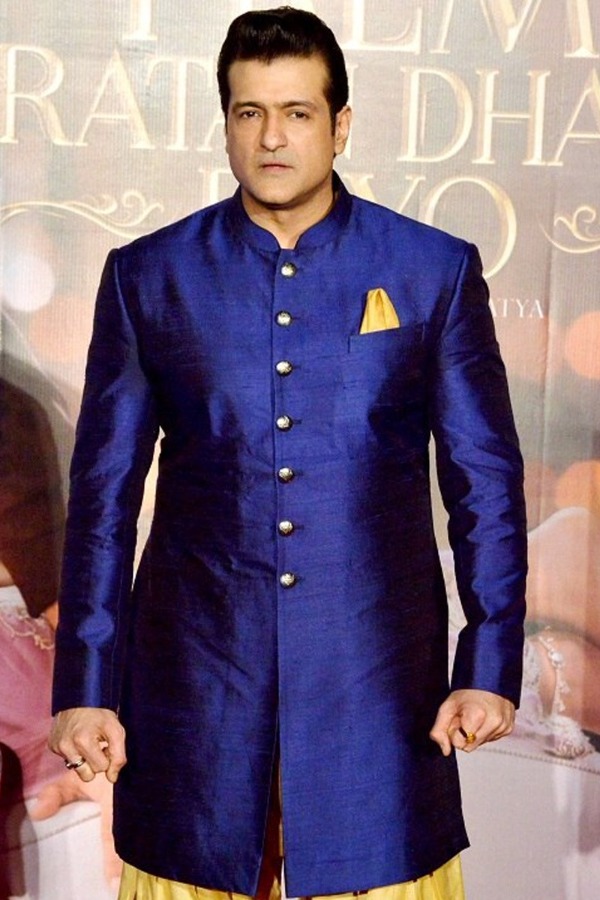
No comments:
Post a Comment